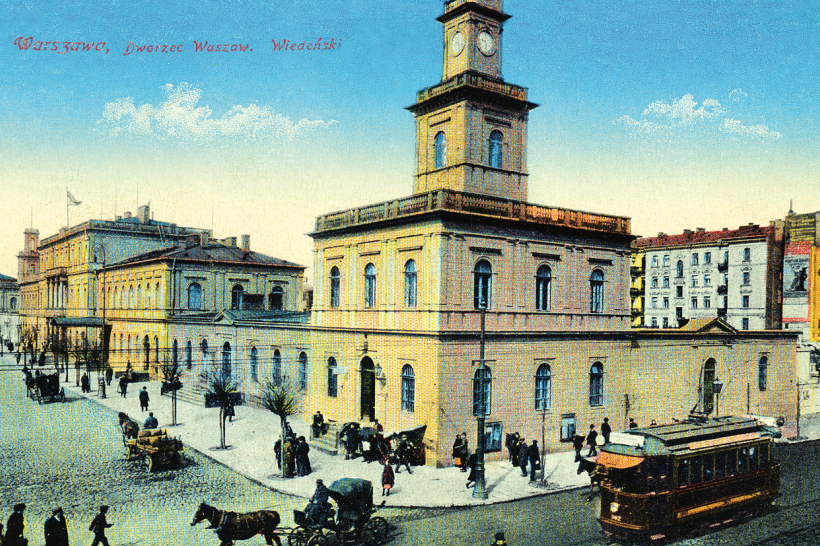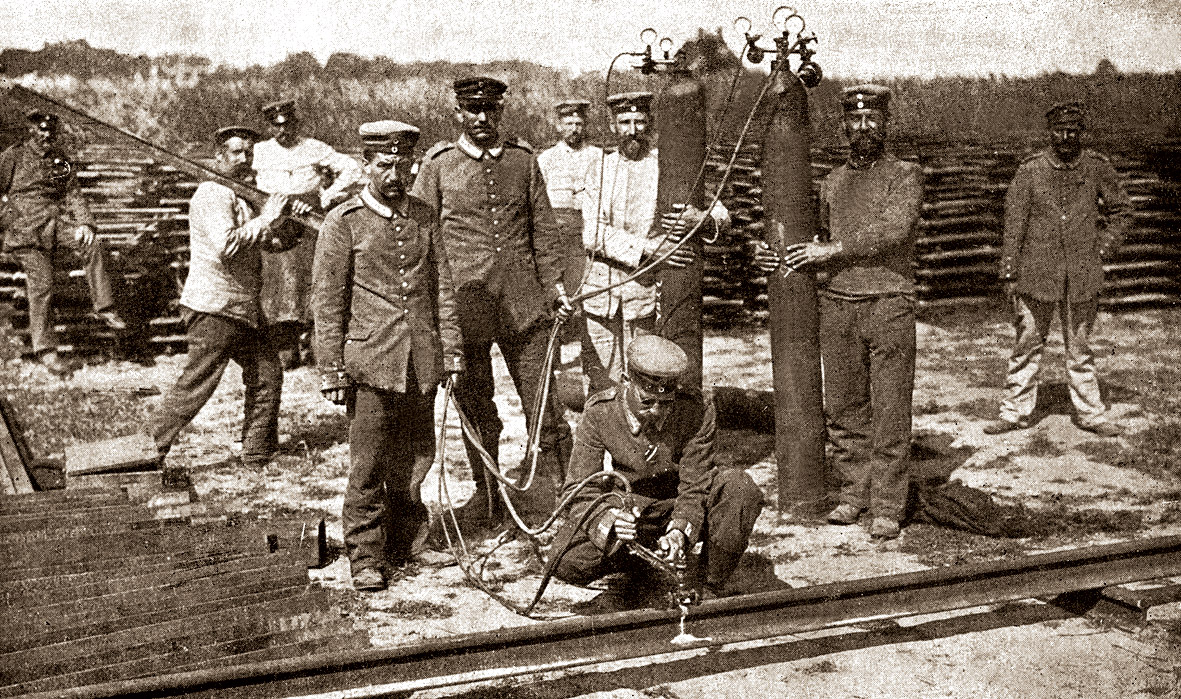
Warszawski dworzec Wiedeński na pocztówce z XIX w. / The Wiedeński railway station on the 19th century postcard
Historia kolei
10 listopada 2020

Warszawski dworzec Wiedeński na pocztówce z XIX w. / The Wiedeński railway station on the 19th century postcard
Koncepcja kolei Warszawsko-Wiedeńskiej
Tymczasem na ziemiach polskich pod zaborem rosyjskim z inicjatywy hrabiego Henryka Łubieńskiego – wiceprezesa Banku Polskiego, i Piotra Steinkellera – bankowca i przemysłowca, powstała koncepcja budowy Kolei Warszawsko-Wiedeńskiej. Projekt autorstwa inżyniera Stanisława Wysockiego przewidywał poprowadzenie kolei z Warszawy przez Grodzisk, Skierniewice, Piotrków, Radomsko, Częstochowę, Żarki do Niwki w możliwie najprostszy sposób, unikając budowania obiektów inżynieryjnych. Zawiązane w 1838 roku Towarzystwo Akcyjne Drogi Żelaznej Warszawsko-Wiedeńskiej przystąpiło do budowy, jednak z powodu zmian technicznych dokonanych w projekcie znacznie przekroczono założone wstępnie koszty. Doprowadziło to do upadku spółki w 1842 roku, procesów sądowych i w efekcie – bankructwa Piotra Steinkellera.
Kwieciste parowozy czyli uroczysta inauguracja
Po dwóch latach przerwy prace zostały wznowione pod zarządem państwowym. Szyny sprowadzano z Anglii drogą morską do Gdańska, a stamtąd Wisłą do Warszawy. 14 czerwca 1845 roku nastąpiła inauguracja ruchu na odcinku z Warszawy do Grodziska, poprzedzona paradą wszystkich 10 ustrojonych kwiatami parowozów. Pierwszy skład liczył 15 wagonów z 200 pasażerami i orkiestrą wojskową. Następny pociąg, z 24 wagonami i ponad 600 gośćmi, dotarł na uroczysty piknik w Grodzisku godzinę później. W 1848 roku połączono tę linię z kolejami austriackimi w Maczkach i tym samym umożliwiono podróż z Warszawy do Wiednia w 37 godzin. Po kilku latach, w 1857 roku, Kolej Warszawsko-Wiedeńską wydzierżawiono spółce z kapitałem pruskim, która zbudowała odnogę z Ząbkowic do Sosnowca. Dużą aktywność w budowaniu linii na terenie zaboru rosyjskiego wykazywały spółki z polskim kapitałem. Nowo powstałe Towarzystwo Drogi Żelaznej Warszawsko-Bydgoskiej zbudowało w 1862 roku linię od Łowicza do Aleksandrowa Kujawskiego.

Pracownicy kolei podczas spawania torów / Railway workers welding tracks
Trasy na terenie zaboru
Dla potrzeb przemysłu tkackiego w Łodzi Towarzystwo Drogi Żelaznej Fabryczno-Łódzkiej uruchomiło w 1866 roku połączenie pasażerskie Łodzi z Koluszkami. Była to najbardziej dochodowa kolej w Królestwie Polskim. Przewoziła węgiel, drewno opałowe, maszyny, buraki, tekstylia, wapno, cukier, cegły i dachówki, przędzę, mąkę i owoce południowe. W tym samym roku Towarzystwo Drogi Żelaznej Warszawsko-Terespolskiej otwarło odcinek do Łukowa, rok później do Terespola, by w 1871 roku dotrzeć do Brześcia. W Warszawie brało początek kilka linii kolejowych: normalnotorowa Droga Żelazna Warszawsko-Wiedeńska startowała z Dworca Wiedeńskiego, a szerokotorowe z dworców: Brzeskiego (obecnie Wschodni), Petersburskiego (obecnie Wileński) i Kowelskiego (obecnie Gdański). W 1876 roku połączono dworce różnych kolei obwodnicą o dwu szerokościach toru, przechodzącą mostem przez Wisłę koło Cytadeli. Poza tym wokół miasta powstały dojazdowe kolejki wąskotorowe: wilanowska (1892), grójecka (1898), jabłonowska (1900) i marecka (1907). Ostatnią na tym terenie inwestycję przed I wojną światową stanowiła linia Herby-Częstochowa-Kielce (1911).
„Wiedenka” i inne ciekawe rozwiązania
Tory układane były z szyn różnych rodzajów, np. „wiedenkę” ułożono z trzech typów: żelaznych Stephensona – po 4,57 metra długości i stalowych Vignolesa – o długościach 5,49 metra i 3,66 metra. Pod koniec XIX wieku na terenie zaboru rosyjskiego kładziono około 400 kilometrów linii rocznie. Przy granicach z sąsiednimi państwami starano się nie budować sieci kolejowych, które w przypadku wojny mogły ułatwić przeciwnikowi transport. Stacje lokalizowano poza obrębem miast, co miało pomóc w utrzymaniu tajemnicy transportów wojskowych i ułatwiać kontrolowanie podróżnych. Co ciekawe, koncepcje sposobu finansowania kolei były podobne we wszystkich trzech zaborach. Początkowo państwo udzielało koncesji na budowę połączeń przez prywatne spółki, gwarantując dochody „od mili”, aby później upaństwawiać gotowe linie.